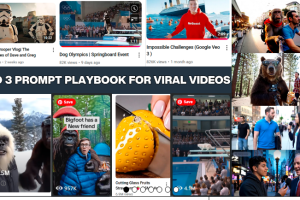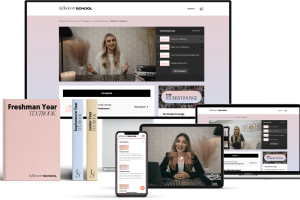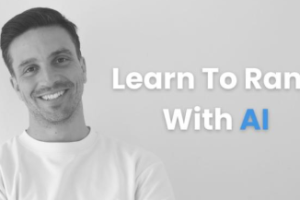Digital Assets – Ultimate Google VEO 3: The Future of Search and Online Visibility
In today’s fast-changing digital ecosystem, businesses that master their digital assets stand apart from the competition. With the evolution of search technology, Google VEO 3 (Visual Experience Optimization) has become a game-changer — redefining how search engines understand, rank, and present content across web platforms.
If you want to future-proof your brand’s visibility, enhance your content reach, and create deeper engagement, understanding the Digital Assets – Ultimate Google VEO 3 strategy is essential. This guide explores everything — from optimizing multimedia assets to leveraging AI-driven VEO insights that boost your discoverability and authority online.
1. What Are Digital Assets in the Era of Google VEO 3?
Digital assets are not limited to text-based content. They encompass every form of online property that represents your brand: videos, podcasts, infographics, PDFs, AI-generated visuals, blog posts, and even interactive 3D models.
With Google VEO 3, these assets are now analyzed visually and semantically — not just by keywords or backlinks. This means Google can see, interpret, and rank content based on its visual quality, engagement metrics, and contextual relevance.
VEO 3 integrates AI-powered visual recognition, multimodal search indexing, and behavioral user intent analysis to reward authentic, high-quality digital experiences.
2. Why Google VEO 3 Is a Revolution for Digital Marketers
Traditional SEO relied heavily on keyword density, backlinks, and metadata. But Google VEO 3 represents the next evolution — focusing on visual and experiential optimization.
Instead of just optimizing your text, you must now optimize how users experience your brand across screens and devices. VEO 3 emphasizes:
-
Engagement-Based Ranking: Pages with interactive or immersive visuals perform better.
-
AI-Driven Relevance: Google’s algorithms understand objects, faces, emotions, and even colors within your visuals.
-
Cross-Platform Adaptability: Your digital assets must perform seamlessly on mobile, desktop, AR, and voice search.
With Digital Assets – Ultimate Google VEO 3, brands can dominate not only SERPs but also Visual SERPs, Image Packs, YouTube rankings, and Google Lens searches.
3. Core Components of a VEO-Optimized Digital Asset Strategy
Creating visibility under Google VEO 3 requires a shift from keyword thinking to experience building. Below are the core components of an effective strategy:
a. Visual Optimization
Ensure every image or video reflects your brand’s quality and story. Use descriptive file names, alt text, and high-definition visuals. Integrate metadata like EXIF data to help Google interpret the context of your media.
b. AI-Readable Design
VEO 3 rewards structured content that aligns with semantic HTML, ARIA labels, and schema markup. This allows Google’s AI to understand each section’s purpose and meaning — improving both accessibility and ranking.
c. Content Depth and Diversity
Diversify your digital assets — include interactive infographics, podcasts, and micro-videos. These enhance user dwell time and reduce bounce rates, both key factors in Visual Experience Optimization.
d. User-Centric Navigation
Your design should lead users intuitively through content. Every scroll, click, or hover tells Google how valuable your experience is. VEO 3 metrics rely heavily on interaction analytics.
4. AI and Automation in Google VEO 3
Artificial Intelligence lies at the core of Google VEO 3. It processes data from computer vision, machine learning, and neural embeddings to recognize patterns that users prefer.
AI helps brands:
-
Predict what users will click next.
-
Generate visual snippets automatically.
-
Personalize search outcomes based on prior interactions.
With tools like Google Bard, Gemini, and Search Generative Experience (SGE), marketers can optimize their digital assets dynamically — in real time. This automation ensures content stays aligned with evolving algorithms.
5. The Role of Visual Experience Optimization in Digital Branding
Digital branding in the era of VEO 3 means more than aesthetics. It’s about how your brand feels digitally.
For instance:
-
A product image should tell a story — not just show the product.
-
A video thumbnail should evoke emotion and curiosity.
-
A landing page should visually communicate trust, clarity, and innovation.
Google VEO 3 evaluates these emotional and cognitive responses, aligning them with user satisfaction metrics. The better your brand’s visual experience, the higher your visibility.
6. Creating High-Performance Digital Assets for Google VEO 3
Here’s how to create next-level assets that perform in the Google VEO 3 ecosystem:
1. Optimize Every Pixel
From images to video banners, ensure color balance, compression ratio, and clarity align with Google’s visual AI standards.
2. Use Smart Captions and Subtitles
Google’s machine vision reads text overlays and subtitles. Always include them to improve both accessibility and context.
3. Embed Rich Data
Include structured data (JSON-LD) to describe your visuals, location, and product details. This increases your presence in Google Knowledge Panels and Image Search.
4. Integrate AR and 3D Models
AR-powered experiences rank higher in visual-first search results. Upload 3D assets or product demos for immersive engagement.
5. Continuously Refresh Your Visual Library
Regularly update your digital assets. Google VEO 3 rewards fresh visual content over static, outdated designs.
7. How to Measure Success in a VEO 3 Environment
To gauge success, shift from traditional SEO KPIs to VEO-based performance metrics, including:
-
Visual Engagement Rate (VER)
-
Image Interaction Time (IIT)
-
Click-to-Visual Conversion Ratio (CVR)
-
Cross-Device Consistency Score (CDCS)
Tracking these helps you understand how effectively your Digital Assets – Ultimate Google VEO 3 strategy connects with your audience.
8. The Future of VEO: Beyond Search
In the near future, Google VEO 3 will merge even deeper with AI assistants, AR ecosystems, and multimodal search. Your digital assets will no longer just rank — they’ll communicate with smart devices, wearables, and autonomous systems.
Imagine your logo being recognized by AR glasses or your product video being suggested automatically by Google Lens. This is where Digital Assets – Ultimate Google VEO 3 becomes more than a strategy — it becomes a digital evolution blueprint.
9. Best Practices to Dominate Visual Search Rankings
-
Create original, high-quality visuals that evoke curiosity.
-
Incorporate AI-generated infographics to enrich storytelling.
-
Use adaptive design for consistent viewing across devices.
-
Build trust signals through recognizable branding and structured metadata.
-
Keep optimizing based on VEO insights, heatmaps, and analytics dashboards.
By following these practices, your brand positions itself as a visual-first authority in the competitive digital landscape.
10. Conclusion: The Power of Digital Assets in the Google VEO 3 Era
The transformation brought by Digital Assets – Ultimate Google VEO 3 marks the beginning of an intelligent, immersive, and visually-driven internet.
Brands that harness this technology will not only enhance visibility but also forge deeper emotional and experiential connections with users. It’s no longer about just being found on Google — it’s about being seen, understood, and experienced.
Your digital success now depends on how well you integrate visual intelligence, AI analytics, and user-centered design into every asset you create. Embrace this shift, and you’ll lead the next generation of online discovery and brand engagement.






Reviews
There are no reviews yet.